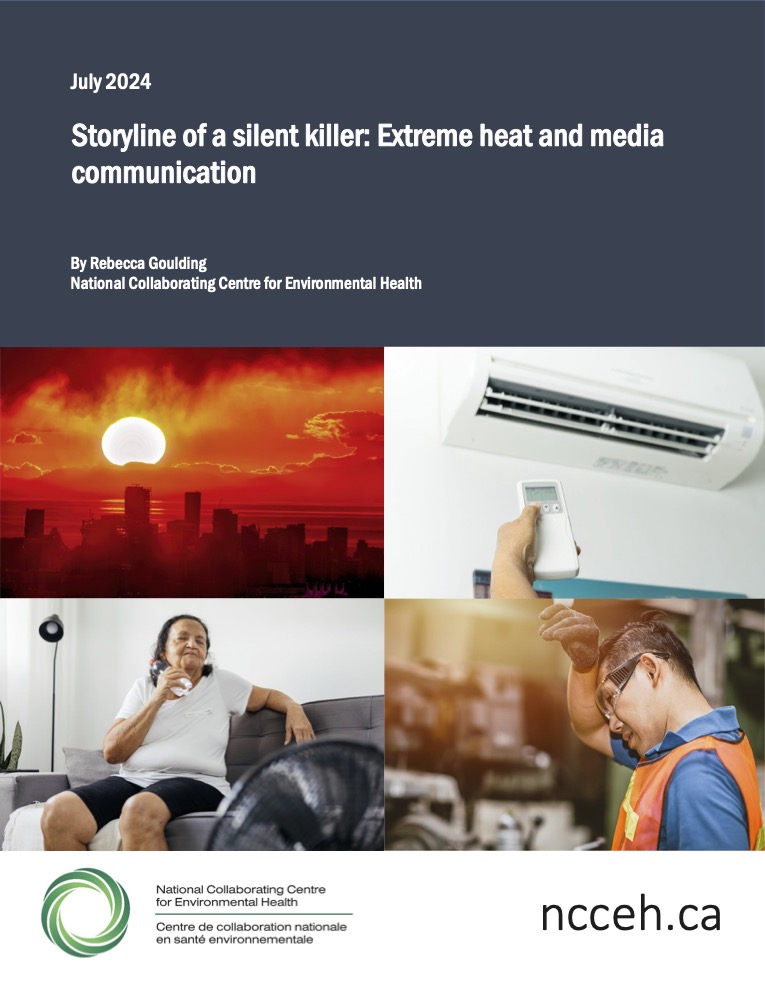Storyline of a silent killer: Extreme heat and media communication
Organization: National Collaborating Center for Environmental Health
Year: 2024

Media professionals, including journalists, reporters, and editors, hold significant responsibility in effectively communicating the risks associated with extreme heat events (EHEs). It is crucial for them to frame heat within the broader context of climate change and emphasize positive actions and solutions. They must also address the unequal impacts of heat on vulnerable populations and underscore the indirect consequences that can result from prolonged exposure. Practical guidelines suggest creating awareness before the season starts, reporting on both outdoor and indoor heat risks, and focusing on at-risk groups such as those lacking access to cooling facilities. Visual and textual media should prioritize conveying heat-related health risks over recreational portrayals. Interviews should offer diverse perspectives, local expertise, and insights into early signs of overheating rather than solely highlighting extreme cases of heatstroke. Collaborating with public health and safety officials is essential for crafting and disseminating proactive health messages and increasing awareness about extreme heat events before they occur, especially during overlapping crises.